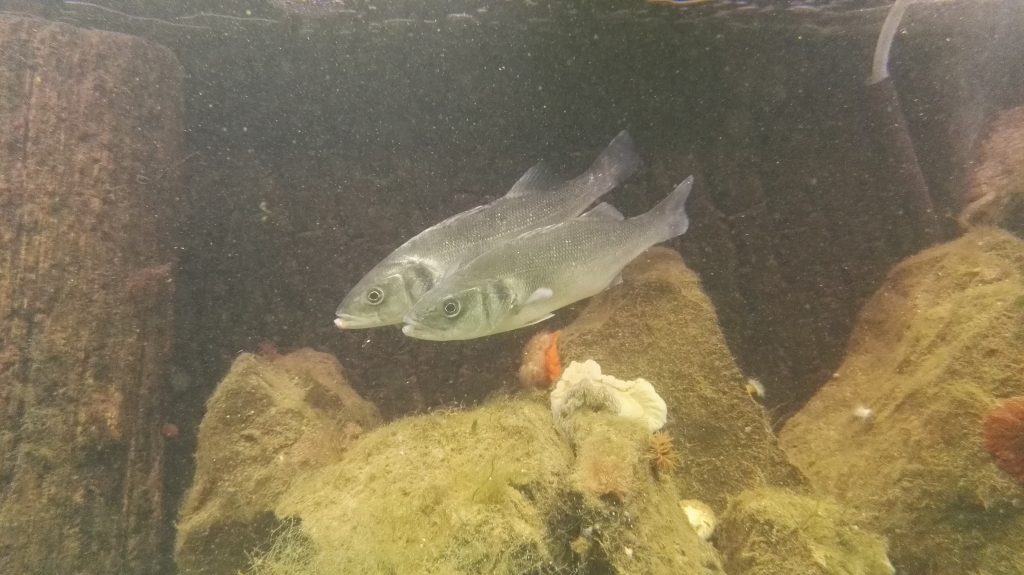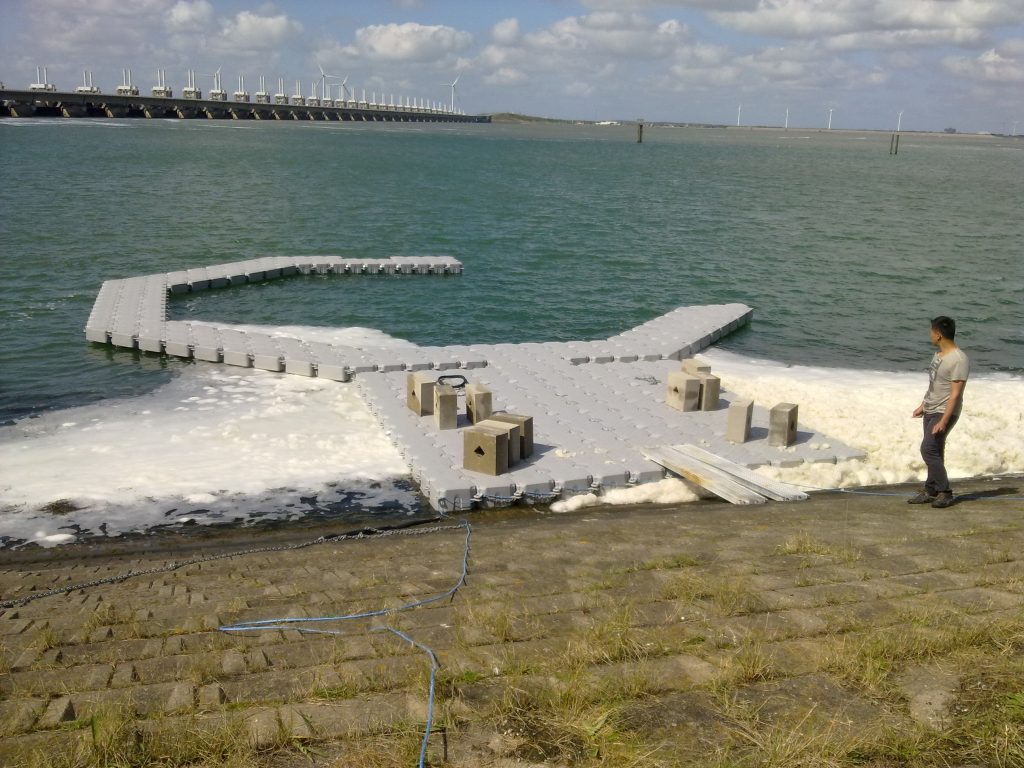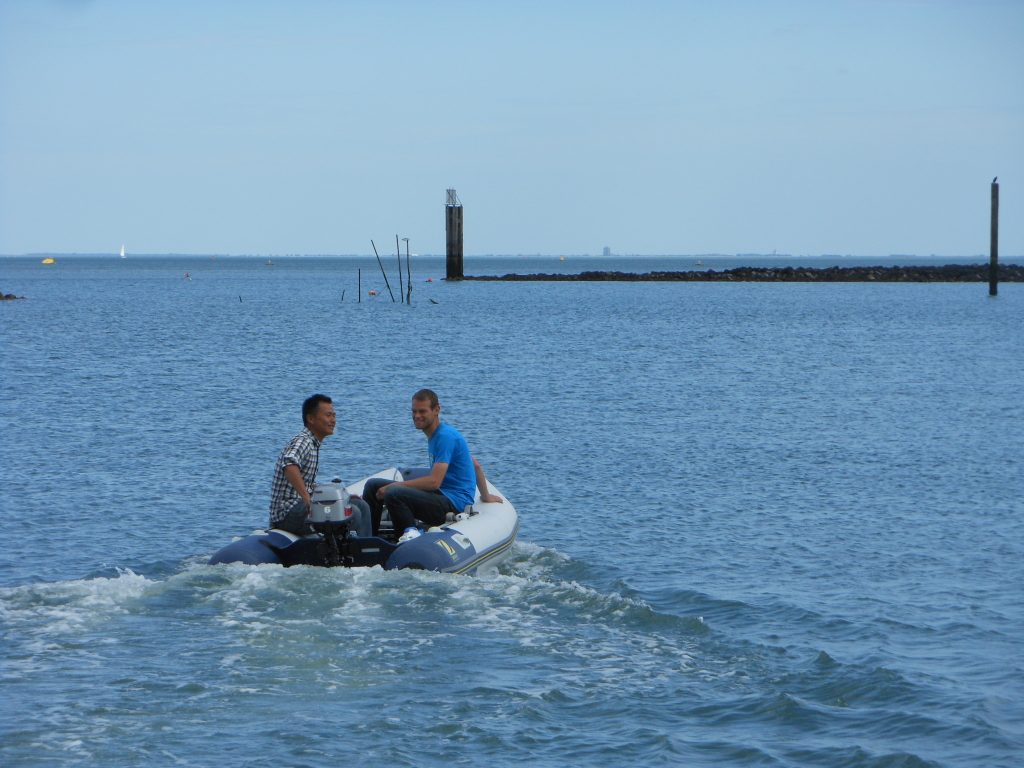We just published a new paper ‘The role of ambient sound levels, signal-to-noise ratio, and stimulus pulse rate on behavioural disturbance of seabass in a net pen‘ and it’s open access (HTML/PDF)! The paper is a collaboration between Leiden University and Wageningen Marine Research and is authored by Errol (Y. Y.) Neo, Erwin (H. V.) Winter, Hans Slabbekoorn and myself.
We are interested in the effects of man-made sound on marine life, including fish. Sound exposures can have a range of effects on fish; it may mask communication or other biological relevant sounds, elicit physiological and behavioural responses, and may even induce physical damage (close to a loud sound source). The sound levels are often used to predict the potential harm of sound exposure, however the acoustic characteristics of the environment (ambient noise) and sound exposure itself (the potentially disturbing stimulus) may also influence the behavioural responsiveness of animals.
Underwater, ambient noise mainly originates from water surface roughness from weather conditions and boat noise. When ambient noise levels are higher, a potentially disturbing stimulus may stand out less strongly (lower signal-to-noise ratio) and thereby elicit a milder behavioural response. Also, the potentially disturbing anthropogenic sounds themselves vary in acoustic characteristics which may affect fish differently, for example the rate at which poles (e.g. of wind turbines) are being driven in the seabed or the rate at which airguns of seismic surveys are being fired.
We tested the effect of such acoustic characteristics by exposing 16 groups of four European seabass to multiple impulsive sound treatments that varied in elevated background level, pulse rate, and pulse level. We implanted the fish with acoustic tags to be able to track the positions of the individual fish. We showed that the seabass increased their swimming depth after the start of the sound exposure, however the variation in the response could not be explained by any of the tested acoustic characteristics. Nevertheless, based on our review of the literature, we think it is worthwhile to continue on this line of research by testing wider ranges of signal and background levels.
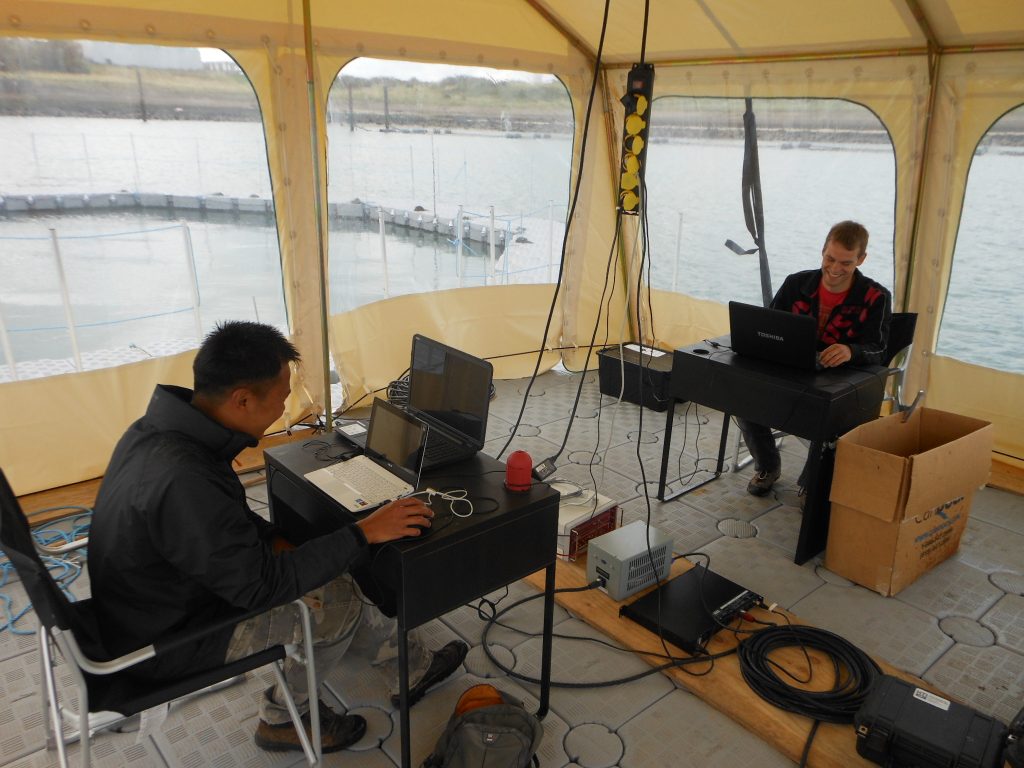
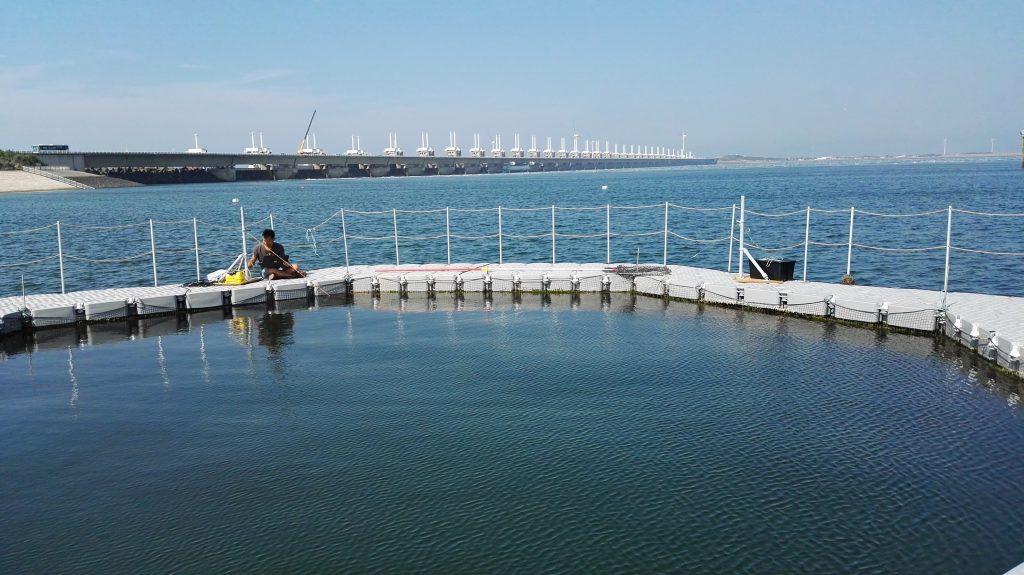
Citation: Hubert, J., Neo, Y. Y., Winter, H. V., & Slabbekoorn, H. (2020). The role of ambient sound levels, signal-to-noise ratio, and stimulus pulse rate on behavioural disturbance of seabass in a net pen. Behavioural Processes, 170, 103992. DOI. [Open Access: HTML/PDF]
P.s. During the field season in which we collected data for the current paper, the Dutch TV programme ‘Vroege Vogels’ visited our field site to make an item on the effects of sound on fish in general, and about another study we did on an acoustic deterrent device for fish. For this, we also used the floating pen and a highly simular experimental design, so it may be interesting to watch the tv item (from 14:35 min on): https://www.bnnvara.nl/vroegevogels/videos/283480
